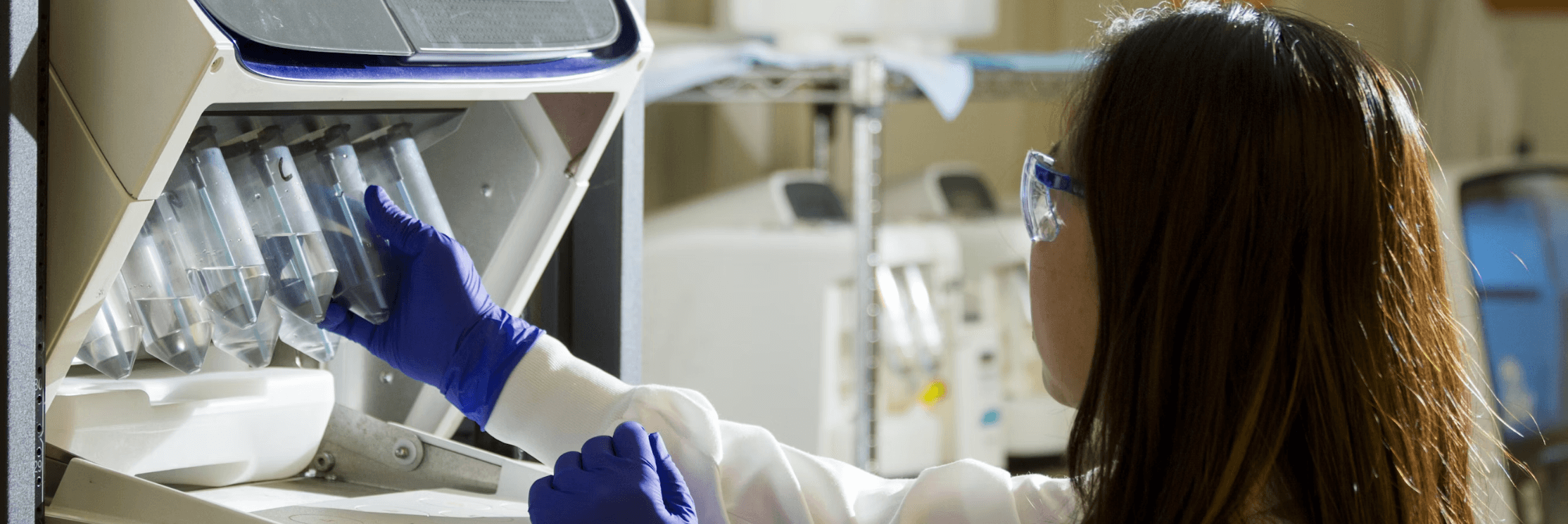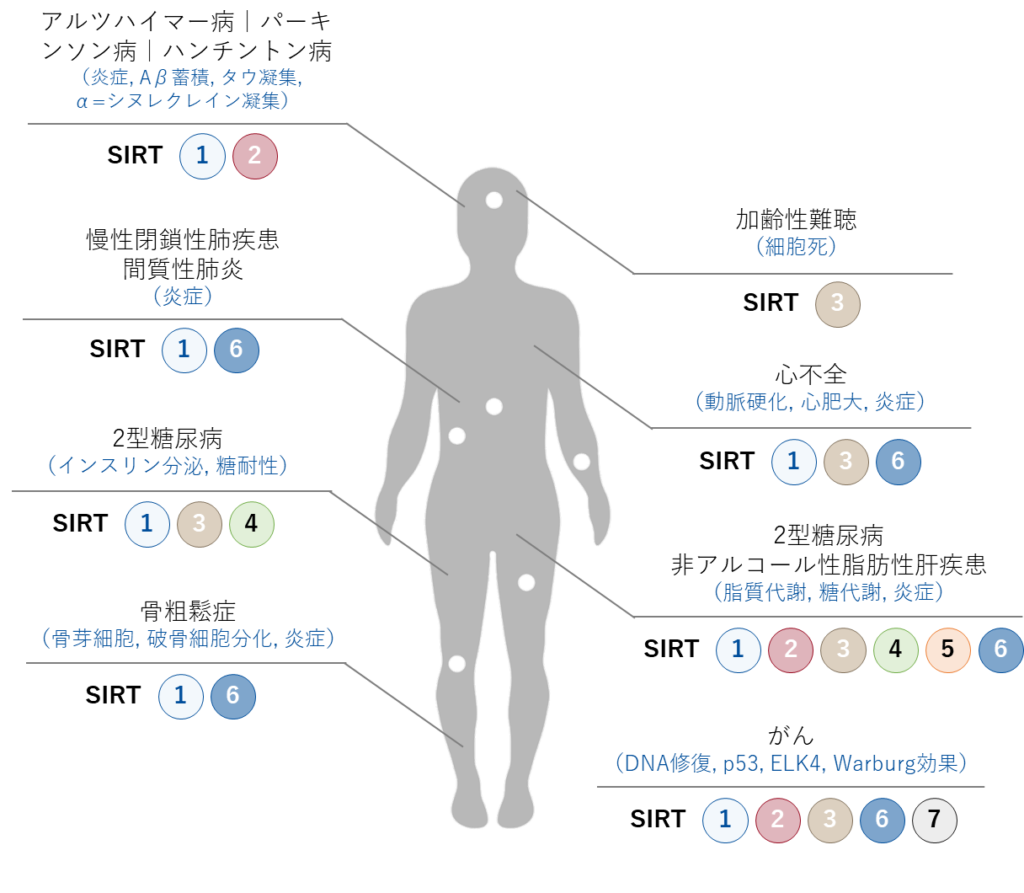
The Discovery of the Century: “Sirtuin Genes”
The sirtuin genes, also known as the “longevity genes,” are a group of genes that play a central role in regulating the aging process and lifespan. These genes are found in a wide variety of organisms, from bacteria to mammals, and numerous experimental results have suggested that an increase in sirtuin gene activity may delay aging.
The significant advancement in this gene research came from a series of publications in 2000 by Professor Leonard Guarente of the Massachusetts Institute of Technology (MIT) and Professor Shin-ichiro Imai, who was working in the same laboratory at the time (now at Washington University). They discovered that enhancing the unknown functions of the yeast sirtuin gene (Sir2) could extend lifespan, whereas the loss of this gene’s function could shorten it. This groundbreaking research result was published in the journal “Nature,” drawing global attention.

Types of Sirtuin Genes
Subsequent research has revealed that there are seven sirtuin genes, SIRT1 to SIRT7, in mammals, each possessing unique characteristics. Among them, the role of SIRT1 is considered particularly important. SIRT1 promotes the secretion of insulin, which regulates blood sugar levels, improves carbohydrate and lipid metabolism, protects nerve cells, and contributes to memory and behavior regulation. It is deeply involved in the regulation of aging and lifespan.

Effects of Sirtuin Genes
Whole-body Anti-aging
Among the sirtuin genes, particularly SIRT1, SIRT3, and SIRT6, are noted for their contribution to anti-aging effects. These genes are known to suppress inflammation, improve blemishes and wrinkles, and strengthen the skin’s barrier function. They also have the potential to reduce fatigue and offer whitening effects through the elimination of reactive oxygen species. Furthermore, they are involved in enhancing metabolism and suppressing cellular aging. The comprehensive action of all seven types of sirtuin genes contributes to their anti-aging effects.
Disease Prevention
The activation of enzymes that work on the expansion of blood vessels can be effective in preventing dementia caused by the obstruction of cerebral blood flow, such as strokes. It has also been found to play a role in the prevention of cancer. One of the triggers for cancer is the damage to DNA by reactive oxygen species, leading to abnormal cell division. Sirtuin genes are responsible for repairing this damaged DNA.
Lifespan Extension
Sirtuin genes act on the prevention of cellular oxidation and the repair of DNA, which are causes of aging, affecting cells throughout the body. The widespread effects of sirtuin genes in keeping cells youthful and preventing diseases can lead to an extension of lifespan.
Diseases That May Improve with the Activation of Sirtuin Genes
There are numerous aging-related diseases reported to be associated with sirtuin genes SIRT1 to SIRT7. Activating these sirtuin genes is expected to have therapeutic effects on these diseases.

Activation of Sirtuin Genes
The key lies in a substance called NAD (Nicotinamide Adenine Dinucleotide). NAD is an essential coenzyme in the production of energy within the mitochondria of cells and is believed to play a role in activating sirtuins. The amount of NAD in tissues decreases with aging, but increasing NAD can activate sirtuins and is expected to have an effect in delaying aging.

Currently Identified Methods to Increase NAD+
01
Restricting Calories to About 70% of the Required Amount
Restricting calories has been shown to promote the activity of sirtuin genes, which in turn delays aging, contributes to rejuvenation, and extends lifespan. Instead of consecutive days of complete fasting, intermittent fasting, such as skipping one meal a day or fasting every other day, is preferred. Such calorie restriction has been proven to enhance NAD levels in mammals and especially increase the activity of sirtuin gene groups such as SIRT1 and SIRT3.
02
Exercising
Moderate exercise also helps activate sirtuin genes. Exercising increases the amount of NAMPT in muscles, which in turn increases the amount of NAD essential for energy production and sirtuin activation. NAMPT is an enzyme necessary for synthesizing NAD in the body. There’s no need for intense exercise; light to moderate aerobic exercises and strength training are effective.
03
Consuming NAD-Boosting Compounds
Until now, NMN has been the most famous compound for increasing NAD. NMN, as a precursor to NAD, reacts with NAPNT in the body to transform into NAD-like substances.
However, a new component that is expected to be an upgrade over NMN has emerged: 5-deazaflavin. Unlike NMN, which becomes an NAD-like substance after reacting with NAPNT in the body, 5-deazaflavin is an NAD-like substance in itself, and thus can directly affect mitochondria and sirtuin genes upon intake. Due to these differences, the power of 5-deazaflavin is tremendous, and its effect on activating mitochondria and sirtuin genes is said to be tens of times stronger than that of NMN.
Contact
Contact
For questions regarding products and services,
Please feel free to contact us here.

Warning: Undefined variable $official_url in /home/r6802039/public_html/kiranjapan.com/wp-content/themes/karin/fixed-cta.php on line 20
Warning: Undefined variable $amazon_url in /home/r6802039/public_html/kiranjapan.com/wp-content/themes/karin/fixed-cta.php on line 20
Warning: Undefined variable $rakuten_url in /home/r6802039/public_html/kiranjapan.com/wp-content/themes/karin/fixed-cta.php on line 20



